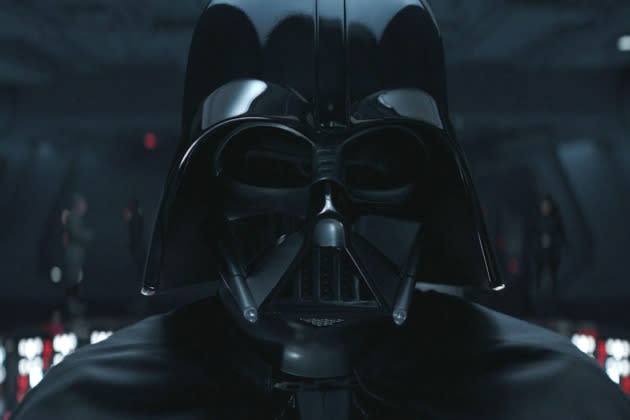
[This story contains spoilers for the series finale of Obi-Wan Kenobi.]
The emotional stakes of Obi-Wan Kenobi were enormous — even if much of the outcome was already known.
More from The Hollywood Reporter
Throughout the Disney+ Star Wars miniseries, it isn’t the threat of life or death that set viewers’ hearts racing, but the journey to better understand the deeply broken relationship between the master, Obi-Wan (Ewan McGregor), and his padawan, Anakin Skywalker turned Darth Vader (Hayden Christensen). And Obi-Wan Kenobi gives far more insight into Anakin’s tragic existence.
With the release of George Lucas’ original trilogy, Star Wars chronicles the classic hero’s journey of Luke Skywalker, a young boy who embarks on a quest to save not only the galaxy, but also his father, from the evils of the Dark Side. It was only with the release of the prequel trilogy 16 years later that fans learned the Star Wars saga was not solely about Luke, but actually a greater, interconnected story about the rise, fall and redemption of Darth Vader.
In just six episodes, Obi-Wan Kenobi adds more fuel to the never-ending fire of Star Wars storytelling, as it deepens the tragic ends of Anakin’s arc. While the series follows Obi-Wan on his journey to release the remnants of guilt and trauma from the events of Star Wars: Episode III – Revenge of the Sith, it paints an even more despairing portrait of Anakin himself — the Chosen One who became a ruthlessly evil man-machine.
One moment in particular comes to mind, brought on by the fan-anticipated flashback scene in “Part V.” It’s a brief sequence that serves an even greater purpose, as viewers are treated to a training duel between Obi-Wan and Anakin, set prior to Star Wars: Episode II – Attack of the Clones.
Throughout the flashback, it’s clear that despite Anakin’s talent and power, his master seems to always be one step ahead. This sentiment is paralleled throughout the fifth episode, as Obi-Wan once again outsmarts Vader, who can’t seem to overcome his impatience.
Think back to two exchanges between Anakin and his soon-to-be-wife Padmé Amidala (Natalie Portman) in Attack of the Clones. In the first act of the film, and also later after Anakin vengefully kills a camp of Tusken Raiders, the padawan expresses frustration with Kenobi, calling his master “overly critical” and misunderstanding.
“I’m really ahead of him,” a young Anakin tells Padmé. “I’m ready for the trials, but he feels that I’m too unpredictable. He won’t let me move on.”
If fans wondered how exactly Obi-Wan was “holding [Anakin] back,” it’s clearer now from the Obi-Wan Kenobi flashback. Except from an outsider’s point of view, Obi-Wan is wise in his decision to delay Anakin’s rise through the ranks. Anakin is reckless, aggressive and far too sure of himself. As his master, Kenobi sees this — not yet realizing it will lead the young Skywalker to the Dark Side, but as a roadblock in his Jedi development.
“You are a great warrior, Anakin, but your need to prove yourself is your undoing. Until you overcome it, a padawan you will still be,” a de-aged McGregor says to Christensen as a young Anakin in Obi-Wan Kenobi.
It’s these personal shortcomings that never allow Anakin to truly defeat Obi-Wan. With this context in mind, “Part V” even reframes the pair’s final showdown in A New Hope, in which Vader strikes down his master once and for all. One step ahead until the very end, Obi-Wan clearly lets the Sith Lord win. In line with Lucas’ affinity for overarching themes that pop up continuously throughout each of the films, it will always be Anakin’s destiny to come up short with Obi-Wan, until he is able to finally redeem himself and return to the Light.
In “Part VI,” the series’ ending battle between Obi-Wan and Vader strikes a more emotional chord, as fans see Anakin fully transformed into Vader, not just physically, but mentally and emotionally, as well.
“I have failed you, Anakin,” Obi-Wan told Anakin in Revenge of the Sith. And it’s the guilt of that — this feeling that he has created a monster — that Obi-Wan has carried ever since. As can be seen in the first few episodes of the limited series, the Jedi-in-hiding holds the weight of the galaxy on his shoulders, feeling responsible for not only losing Anakin, but for the fall of the Jedi Order and the Republic as a whole.
And as intended, it’s heartbreaking to watch the emotion in Obi-Wan’s eyes as he tells Anakin what he’s been holding in for 10 years: “I’m sorry,” he says, finally able to see his padawan’s face from under Vader’s helmet. In a voice that’s an amalgam of both the suit and Christensen, Vader delivers the lines that Obi-Wan finally needed to hear in order to let go of his guilt.
“I am not your failure, Obi-Wan,” Vader says. “You didn’t kill Anakin Skywalker. I did.” With that closure, Obi-Wan is able to walk away from the encounter, acknowledging his old friend as “Darth” and leaving his attachment to Anakin behind. And while it’s a triumphant moment for Obi-Wan, it’s yet another tragic hour for Anakin. Trapped inside the shell of Vader’s suit, he’s lost everything — his old life, his body, his wife, his friends and his children. Now, he’s even lost Obi-Wan.
It’s these moments of the show that draw the characters of Anakin Skywalker and Darth Vader even closer together. While we typically see them as two separate beings (with 20 years passed between Episodes III and IV), the limited series gives better insight into the man — or what’s left of him — in the suit.
As Padmé says in her last words to Obi-Wan, “There is good in him.” And while Darth Vader may not realize it just yet, the audience is well aware that Anakin is indeed still buried somewhere deep within the monster.
Best of The Hollywood Reporter




